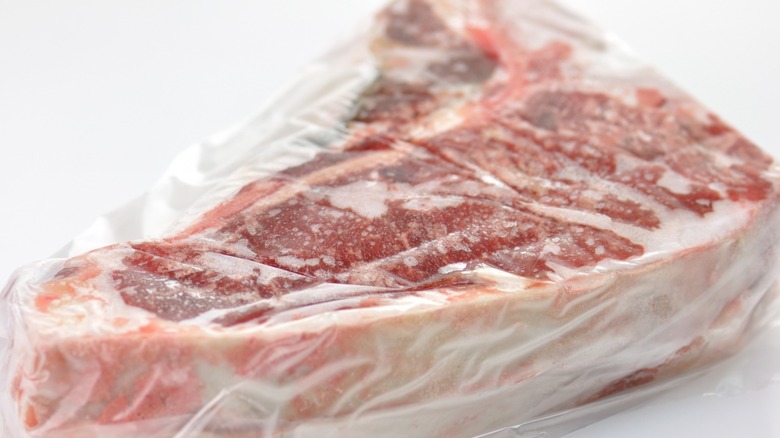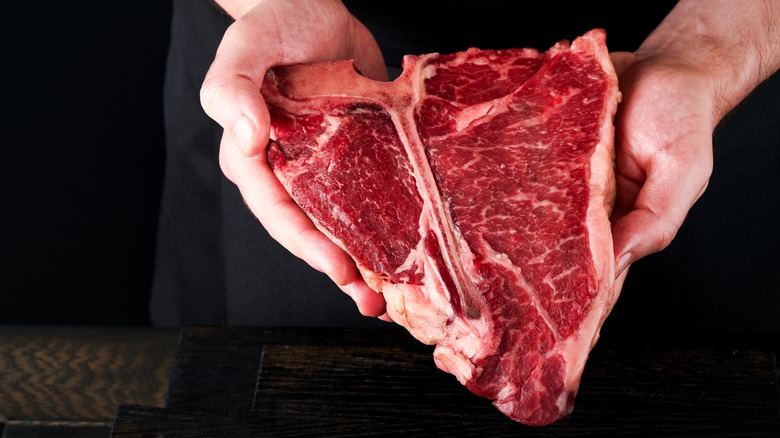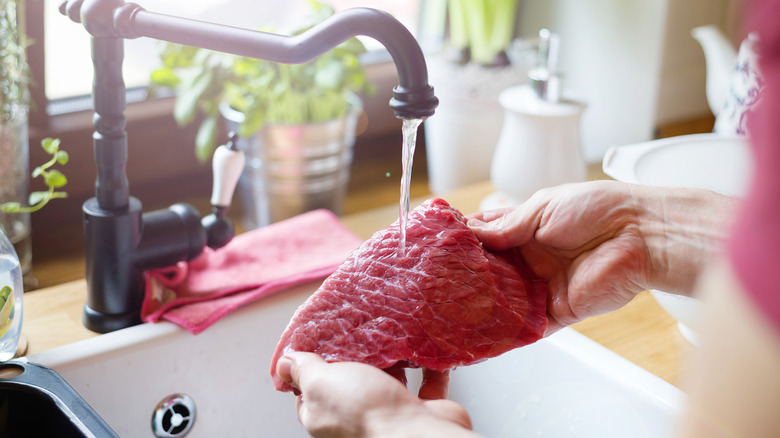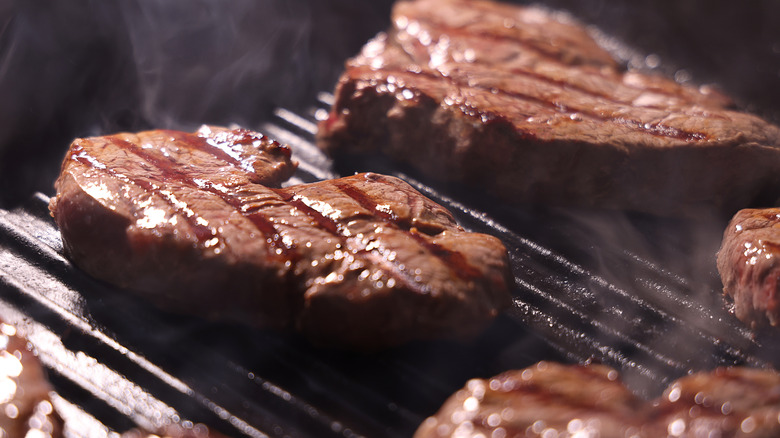Apparently, You Can Quickly Defrost Steak With Two Pans
There are those who remember to move their meat from the freezer to the fridge in time to thaw for the next day's dinner, and then there's the rest of us. We, the less masterful masses, forget. When the time for dinner prep rolls around, we are left staring at a frozen solid block of hopelessness.
Never fear; Science is here, and by science, we mean two metal pans and the heat-conducting properties that make them an easy tool to thaw your meat. This thaw-your-frozen-steak-quick trick involves turning over a metal pan and placing your (still sealed) frozen meat on that pan-bottom. Next, fill a second pan with warm water, and place it atop your frozen meat.
The weight of the pan filled with water sandwiches the frozen meat between two heat conductors. While the frozen meat is in contact with the conductors, the colder temperature of the steak transfers to the warmer temperature of the metal. Over time, the temperatures of the cold meat and the warm pan meet in the middle, and voilà — one of the best ways to thaw meat.
Avoid the microwave when thawing steak
The culinary elite generally can't stand microwaves for any kind of kitchen use, from actual cooking to even minor sidebar tasks like reheating a sandwich. Just think about it. Can you imagine Gordon Ramsay using a microwave? Probably not. So when it comes to finding a safe solution for quickly and safely thawing frozen meat, chefs like Ramsay may have a point in avoiding microwaves.
In general, when it comes to defrosting meat in the microwave, you should proceed with caution. The exterior of your meat will defrost faster than the middle in a microwave, meaning your edges will have a raised temperature in which bacteria can become active. Welcome to the danger zone. What's more, the microwave can take even the best steak and give it a tough texture since its mega-zap tends to strip the steak of its juices.
Fortunately, for frozen steaks, there are plenty of other thawing methods in addition to the aforementioned two-pan-sandwich trick that won't compromise food safety or the quality of the meat.
Cold water submersion safely thaws meat
In a pinch, you can defrost meat using the tried-and-true submersion method. In fact, dunking meat in cool water (changing the water every 30 minutes or so) can defrost it within a few hours in much the same way as thawing it on a fridge shelf overnight would. When submerging frozen meat, the USDA advises double-checking that there are no leaks in the seal around your meat. After all, you don't want your steak to absorb water, nor do you want the steak's juices dripping all over your kitchen and creating a bacterial catastrophe.
If you choose to use this method, you should still cook your steak immediately after it is thawed, as leaving meat on your countertop can lead to bacterial growth and an increased potential for food poisoning. On the off-chance that you can't cook the meat right after it's been thawed, you should return it to the fridge for safekeeping and cook it as soon as you can. As a rule of thumb, raw meats should not be kept in a fridge for more than a few days.
Worse case scenario — cook meat from frozen
Although cooking frozen meat isn't the most ideal option, the USDA confirms it is safe to do so. We get it. Sometimes you're in a rush, or, as mentioned earlier, you forgot to pull the steaks out of the freezer the night before. However, it's worth noting that cooking meat from a frozen state will take much longer and may even require a higher cooking temperature.
Frozen chicken, for example, should be cooked at a temperature of 350 degrees Fahrenheit to ensure it reaches an internal temperature of at least 165 degrees Fahrenheit. A frozen chicken will also take about twice as long to cook as a thawed chicken. While you save time in the defrosting department, you lose time in the cooking department.
That said, certain meats are much better suited to being cooked from a frozen state. Some sausage manufacturers expect that you'll take the product from the freezer and put it straight in a pan, but you should always double-check the packaging to make sure it's safe to skip the thawing process. At the end of the day, it's always better to err on the side of caution when it comes to raw meat.



